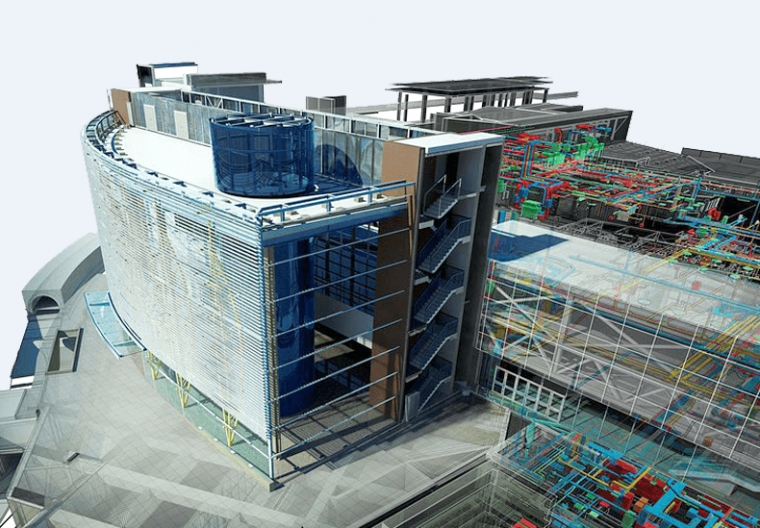The examples of application of the BIM methodology to the design and construction of works, in some cases even very complex, are increasingly numerous, even in Italy.
These initial applications have allowed to begin to clarify the ways and tools necessary to effectively apply the BIM methodology to the management of a building process.
BIM models and construction companies
In a process managed with this methodology, the design stage leads to the creation of a BIM model that contains, in an integrated way, all the architectural, structural and MEP (mechanical, electrical, plumbing) objects and components, each with its own information (geometric, technical, functional, economic, etc.). The objects of the BIM model are easily connected to the price lists and to a maximum time schedule, usually prepared for the definition of H&S plans.
These are the documents underlying a contract with the general and special terms. To these, the Contracting Authority adds an information management document that represents the guarantee of a correct management of the entire building process in BIM up to the final delivery of the work. Therefore, during the offer phase, the company will make its economic, technical, organizational and information management proposals, and will be evaluated according to them.
Once the contract has been awarded, these become the contractual references and must be respected as such. In this phase the BIM model can "split" itself. The company, with its suppliers, will modify the contractual model at least in terms of timing, preparing a schedule of operations that, as long as it does not change the contractual times, may not require the modification of the maximum time schedule. Likewise, for technical solutions, if they meet the contract specifications, they do not necessarily imply modifications to the procurement model.
In an "ideal" situation that does not provide for changes and/or variations during construction, the company prepares and updates its BIM model and at the same time updates, with appropriate views and the necessary in-depth analysis of what has been achieved, the Contractual BIM model. The latter, being linked to the metric calculation based on the contract, guarantees the automatic drafting of the book of measurements and subsequent accounting documents. It is therefore bound to issue the progress status of the works.
How the Works Management changes
Beyond the high level of supervision, the role of the Director of Works will be to periodically check that on a certain date the company claims to have realized and registered in the contractual BIM model, it corresponds to what has actually been achieved. The "physical" presence of part or all of a finished work or the implementation of a component, documented in the BIM model, if they respect the project specifications and confirm the execution/supply, allow to proceed with accounting. What is of interest is that this component respects the project specifications and above all is associated with the transport document of the material and the test certificates, to testify that what is supplied is consistent and in agreement with what the company was contractually committed to providing.
What in a building process managed by BIM changes, compared to traditional management, is the obligation for the Works Management to verify that the contractual BIM model is completed and updated by the Company during the construction phase, ie 'built as a little' at a time and not at the end of the work, when many things can no longer, for the succession of the various processes, be properly verified. This is the new possibility offered by working with models, ie by automatically connecting the whole process that leads to the issue of SAL to the as-built view of the contractual model.
All this in compliance with what must have been previously formalized, through a tender dossier that clearly specifies these aspects and an information management plan (pre-contractual and contractual BEP) prepared by the company and accepted by the contracting authority.
Through this methodology and these tools will therefore be much easier to manage the variants which, once proposed and accepted, will become part of the contractual BIM model, obviously with the new prices, and will be managed in the same way as described above.





